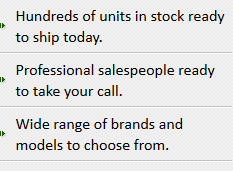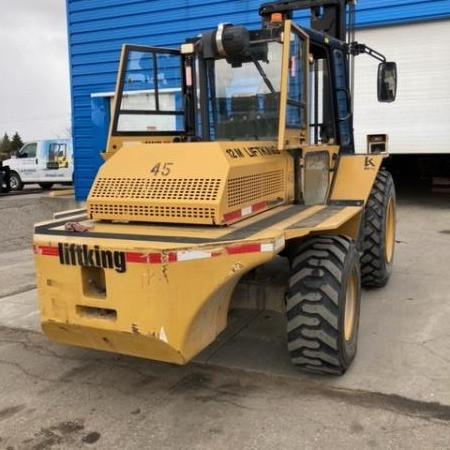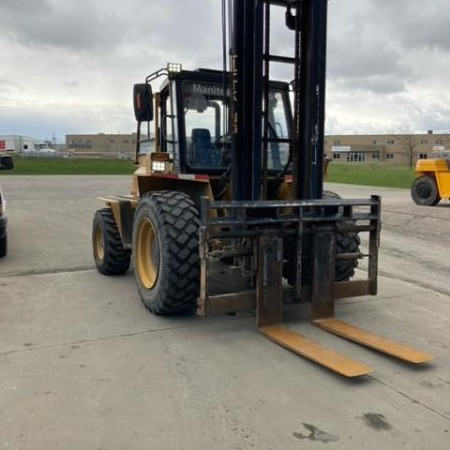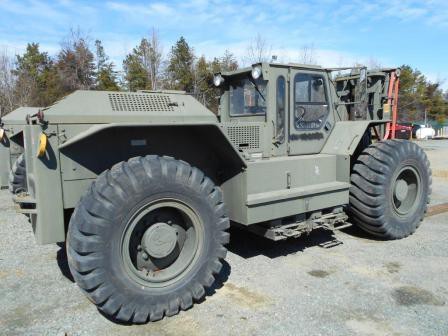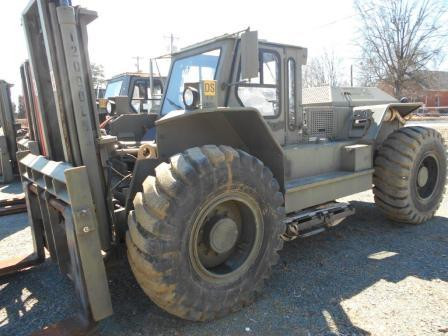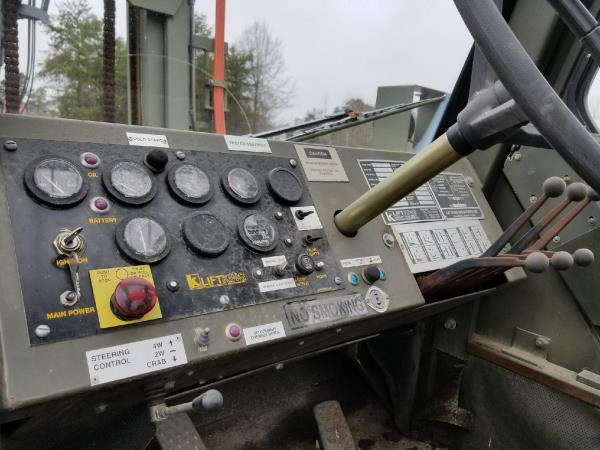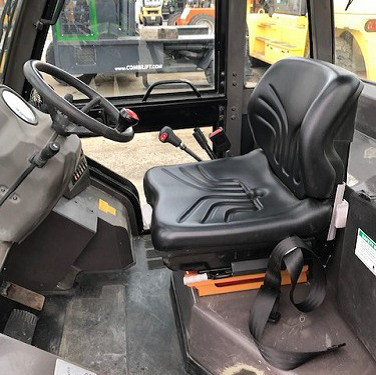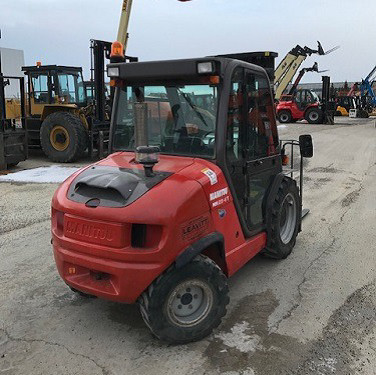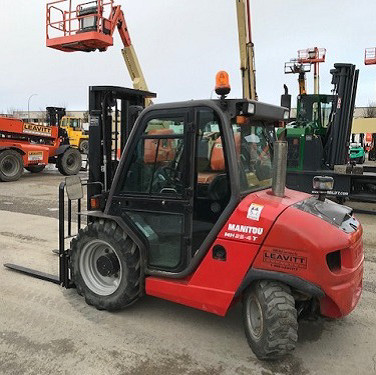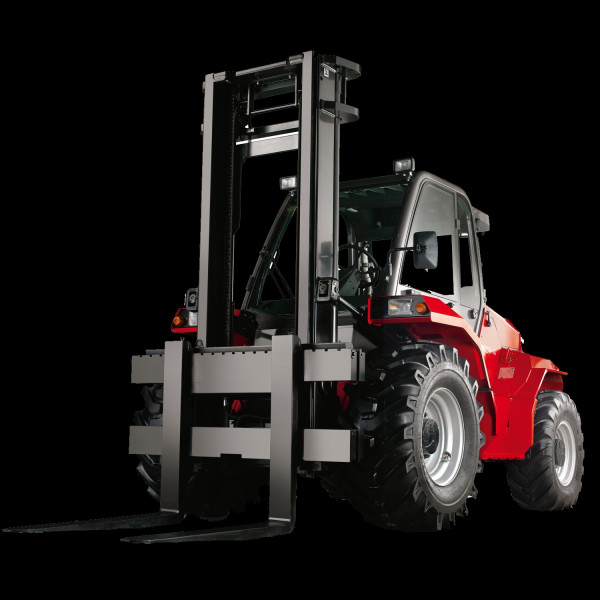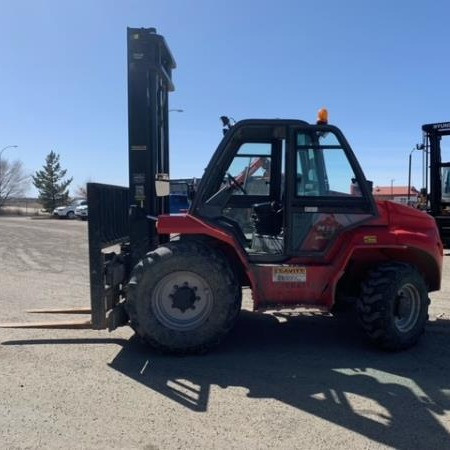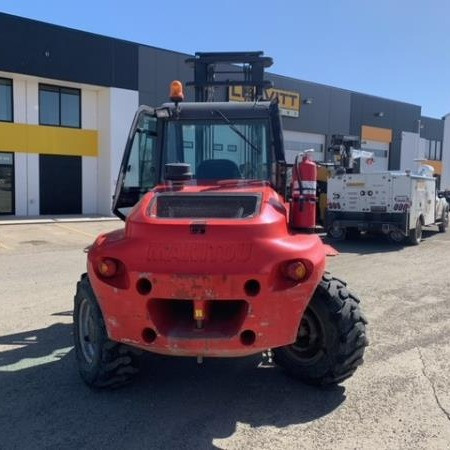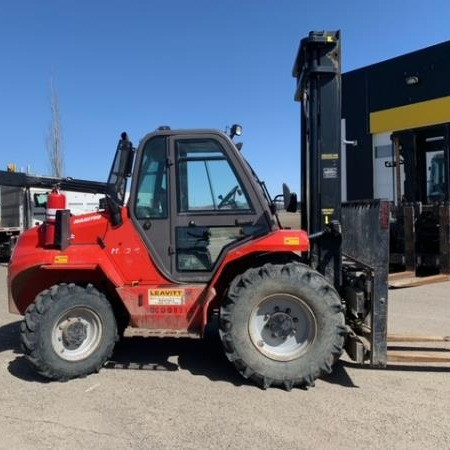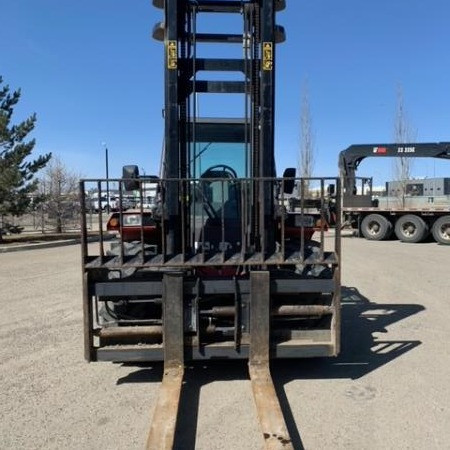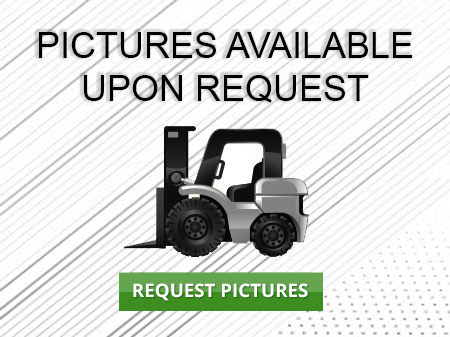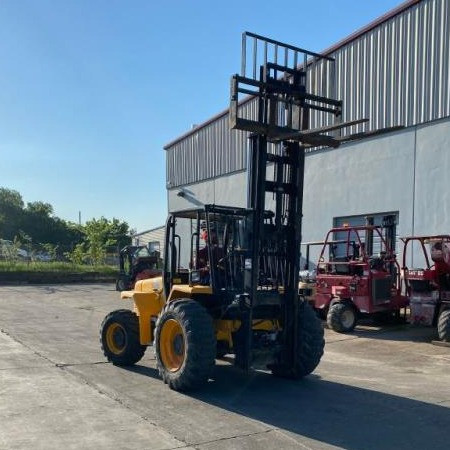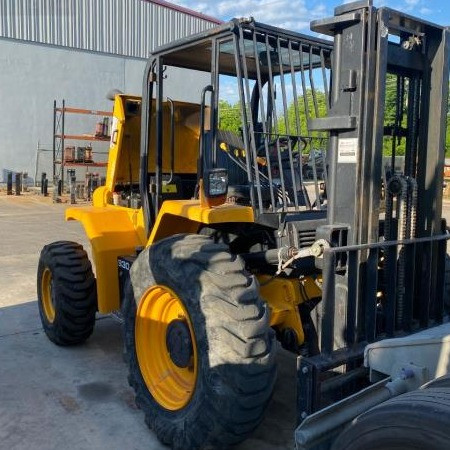Rough Terrain Forklift Vallejo
Used Rough Terrain Forklift Vallejo - Forklifts rely on two forks to unload, load and transport items. Forklifts fall into two main categories, industrial forklifts and rough terrain forklifts.
The first category of forklifts, industrial forklifts, are mostly used in warehouses and at loading docks on surfaces that are relatively smooth and level. Ideal for uneven terrain and rocky locations, rough terrain forklifts travel well in difficult environments. Commonly found at exterior construction sites, rough terrain forklifts have the tires, size and weight capacity to handle heavy loads. The tire type is one of the key differences between rough terrain and industrial forklift units. Common road tires, cushion tires are the main kind found on industrial forklifts. Rough terrain models rely on pneumatic tires, a kind of tractor tire known for better floatation and traction abilities. Internal combustion engines can power industrial forklifts; however, more often they rely on an electrical source such as a fuel cell or better. Rough terrain models typically rely on an internal combustion engine.
Types of Class 7 Rough Terrain Forklift Trucks
There are three main kinds of Class 7 Rough Terrain Forklift Trucks. The rotating telehandler forklift, straight mast forklifts and rotating forklifts are in this category.
Every rough terrain forklift truck is designed to operate on disturbed ground and difficult locations commonly found in military and construction atmospheres. The rough terrain models travel and perform well in difficult locations. Safety considerations are taken into account for rough terrain locations with raising loads in difficult environments to keep the operator safe from tipping over. As with all forklift operation, the machine must be in a position to remain stable before lifting, transporting or lowering a load. Stability of ground and knowledge of proper lifting technique is essential for safe operation of rough terrain forklifts.
Straight Mast Forklifts
Straight mast forklifts are designed to transport building materials around a range of rough terrain sites such as demolition and construction sites. These forklift trucks provide increased maneuverability and accessibility because it is fitted with big, heavy-duty pneumatic cushion tires. These allow the forklift truck to easily travel over rough terrain on the worksite. The majority of straight mast forklifts come in both two wheel and four wheel drive capabilities. The majority of straight mast forklifts rely on propane or diesel fuel to equip them for interior short-term jobs. However, these machines are best suited for outside jobs. Straight mast forklifts have a similar lift capacity compared to standard forklift models; ranging from 5K to 36K lbs.
Telehandler or Telescopic Handler Forklifts
Telescopic handler forklifts or telehandlers feature a telescoping boom; hence their name. This telescoping boom allows the forklift truck to pick up and place loads at various distances and lift heights in front of the machine. The reachability of the forklift provides the operator with greater flexibility when placing a load.
A standard telehandler forklift is long and low, with two wheels at the very front of the forklift and another pair of wheels toward the rear of the machine. The telescopic boom can be found at the back of the forklift, mounted on a pivot that is attached many feet higher than the frame of the unit. The fuel tank and hydraulic fluid tank are found opposite to the forklifts’ cab that is typically mounted on the left side. Along the center of the machine, the engine and transmission can be found inside the frame. This common configuration allows for a balanced forklift which is necessary for the basic stability of the machine which lifting, transporting and lowering loads.
Compared to standard forklifts, telehandlers deliver higher lift heights. High-reach telehandlers can extend their full load capacity to 56 feet. The compact telehandlers can extend their full load capacity from 18 feet. Their load capacities usually range between 5,500 and 12,000 pounds.
All-terrain forklifts often include all-wheel steering which allows for greater maneuverability. This, along with power shift transmission and other steering features, means that the operator can move the lift in as close proximity to the work area as possible.
Recent telehandler units showcase top-of-the-line ergonomic design to generate increased comfort and operator satisfaction. Operator comfort is enhanced via larger cabs and tilted steering. These ergonomic upgrades have been shown to lessen repetitive stress injuries and lessen operator fatigue.
The majority of telehandler forklifts are operated by a single joystick. The joystick controls all the forklift’s boom functions as well as the hydraulic system which allows for straightforward and efficient operation.
Non-marking tires are a feature that telehandler forklifts can benefit from by allowing these units to be utilized for maintenance on billboards and signs and on stadiums and buildings.
Rotating Telehandler or Roto Telescopic Handler Forklifts
The basic telehandler forklift has much in common with rotating telehandlers and roto telescopic handler forklifts. Telehandlers are capable of rotating heavy-lift weights to tremendous heights. This unit’s added turntable and rotation flexibility increases the types of jobs it can complete. Not having to reposition the forklift saves time and money. The rotating models have access to 360 degrees, creating a much greater workspace with immediate access.
With rotating telehandlers, one joystick handles the lift capacity and a second joystick is responsible for the rotation factor. Useful additional features may be added to your standard telehandler or rotating telehandler including 4WD, increased traction via minimized slip differential on the rear axle, and power-assist steering.
Of course, a machine that can rotate has extra safety considerations to understand. Because of this, rotating telehandler rough terrain forklifts come with stabilizers to increase the safety when rotating loads from one side of the forklift to the other. Some rotating telehandlers do not have stabilizers. These units are created to move and work in various aspects of the job site and are easier to reposition without stabilizers.
The standard telehandler offers fixed cab components and rotator telehandlers are generally smaller in comparison. Because of this, their load capacities are also smaller than the standard telehandler. Load capacities for rotating telehandlers usually range between 4,000 and 10,000 pounds, with lift heights ranging from 15 to 80 feet.
Standard and rotator telehandlers can double as a crane when outfitted with specific winch accessories. These forklift attachments can save time and money by preventing a separate crane rental to be required.
Advancements for Rough Terrain Forklifts
Popular rough terrain forklift attachments include rotating fork carriages, booms, articulating booms and winches. Because of the importance of forklift attachments in their ability to adapt forklifts to many different types of specific jobs, it is expected that the creation and availability of new rough terrain forklift attachments will continue to increase.
Most of the proposed advancements will consist of included safety features within the rough terrain forklifts. The latest safety upgrades include automatic load restriction and other features. By automatically weighing a load, these systems calculate the loads’ safe reach distance while taking the boom angle and its’ extension into account. If the safe reach distance is reached, an alarm will sound, warning the operator to make the proper adjustments to either the boom angle, the reach distance or load weight.
Rough Terrain Forklift PDF
Stock Number: 209058 GL
Make: LIFTKING
Model: LK12M42
Year: 2015
| Stock Number |
209058 GL |
| Make |
LIFTKING |
| Model |
LK12M42 |
| Year |
2015 |
| Category |
Rough Terrain Forklift |
Stock Number: 267846 GL
Make: Liftking
Model: LK12000
Year: 2003
| Stock Number |
267846 GL |
| Make |
Liftking |
| Model |
LK12000 |
| Year |
2003 |
| Category |
Rough Terrain Forklift |
Stock Number: DP-MAN008 GL
Make: MANITOU
Model: MH25-4T
Year: 2016
| Stock Number |
DP-MAN008 GL |
| Make |
MANITOU |
| Model |
MH25-4T |
| Year |
2016 |
| Category |
Rough Terrain Forklift |
Stock Number: EQC008213 GL
Make: MANITOU
Model: M50
Year: 2017
| Stock Number |
EQC008213 GL |
| Make |
MANITOU |
| Model |
M50 |
| Year |
2017 |
| Category |
Rough Terrain Forklift |
Stock Number: 208325 GL
Make: MANITOU
Model: M50.4
Year: 2015
| Stock Number |
208325 GL |
| Make |
MANITOU |
| Model |
M50.4 |
| Year |
2015 |
| Category |
Rough Terrain Forklift |
Stock Number: LS15257 GL
Make: JCB
Model: 930
Year: 2013
| Stock Number |
LS15257 GL |
| Make |
JCB |
| Model |
930 |
| Year |
2013 |
| Category |
Rough Terrain Forklift |
